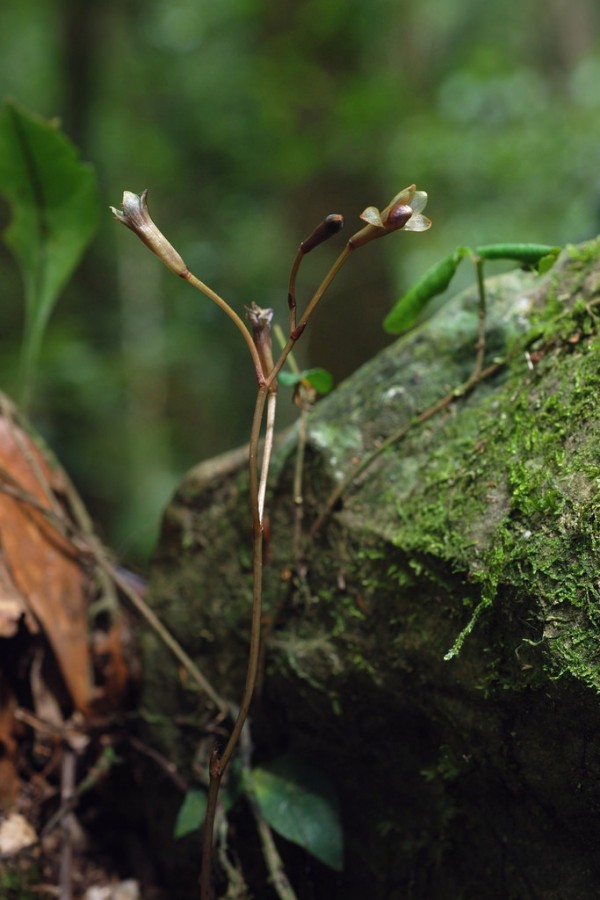By Dane Lorica, | November 15, 2016

A Japanese photographer has discovered a new parasitic which feeds on fungi. (Flickr)
Not all plants fully depend on sunlight to produce food, some plants called mycoyheterotrophs feed on the roots of fungal hosts like moulds and mushrooms. Recently, a new parasitic plant named Lecanorchis tabugawaensis was discovered by a photographer in Yukushima's lowland forests.
Like Us on Facebook
These plants, which are not dependent on photosynthesis, only show on the surface during period of fruiting or flowering. Many of these species are small in size and only bloom for a short span of time which make them appear rarely.
While project associate Suetsugu Kenji of the Kobe University works on documenting parasitic plants distribution in Japan, Yamashita Hiroaki, a photographer working with Suetsugu, spotted an unknown species of orchidaceous in the laurel forests in July 2015. The researcher conducted an in-depth examination of the plant with Fukunaga Hirokazu. The findings show that the Lecanorchis tabugawaensis is closely related to Lecanorchis amethystea but its inner part suggests that it is indeed a new species.
Hiroaki's discovery has stalks that measures 20 to 40 centimeter in length and sprouts to approximately five white flowers between July to August. Tabugawa, where the species was spotted, is also a habitat of many endangered floras like Lecanorchis trachycaula, Lecanorchis virella, Apostoasia nipponica, Vexillabium yakushimense, Lycopodium sieboldii, and Lysionotus pauciflorus. The presence of mycoheterotrophs in the area suggests that the area has an abundant ecosystem of fungal networks that provide food to these species.
However, Tabugawa is not a protected which makes logging legal in the area. Cedar logging near the vicinity may lead to drought which will alter the mycoflora resulting in the extinction of different plant species. Biologist Kumagusu Minakata stressed that environment, where mycoheterotrophs live, is a sanctuary and therefore should be protected.
The discovery of the new parasitic plant Lecaorchis tabugawaensis was published in Phytokeys this month.
-
Use of Coronavirus Pandemic Drones Raises Privacy Concerns: Drones Spread Fear, Local Officials Say

-
Coronavirus Hampers The Delivery Of Lockheed Martin F-35 Stealth Fighters For 2020

-
Instagram Speeds Up Plans to Add Account Memorialization Feature Due to COVID-19 Deaths

-
NASA: Perseverance Plans to Bring 'Mars Rock' to Earth in 2031

-
600 Dead And 3,000 In The Hospital as Iranians Believed Drinking High-Concentrations of Alcohol Can Cure The Coronavirus

-
600 Dead And 3,000 In The Hospital as Iranians Believed Drinking High-Concentrations of Alcohol Can Cure The Coronavirus

-
COVID-19: Doctors, Nurses Use Virtual Reality to Learn New Skills in Treating Coronavirus Patients







